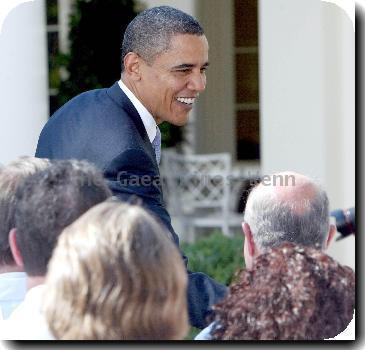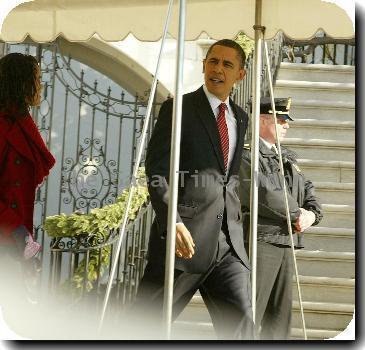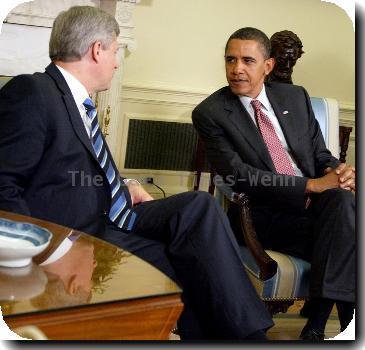With state funding a fraction of 2000’s sum, Census response rates lag in hard-to-reach areas
By Juliana Barbassa, APSunday, April 11, 2010
Lacking state funding, Census response rates lag
OAKLAND, Calif. — State and local governments hammered by the recession have cut spending on outreach for the 2010 U.S. Census, leaving hard-to-reach neighborhoods with response rates that may fall behind the count a decade ago, officials said.
The funding cutbacks have come at all levels, and at a cost.
California, for example, dedicated $24.7 million to the Census 2000 campaign. Although an undercount could cost the state billions in federal funding and a Congressional seat, this year’s outreach budget is only $2 million.
Two weeks into the count, the state’s census form return rates are about 10 percent behind the 2000 total, officials said, adding that the numerical disparity would be worse without the efforts of philanthropic and community-based organizations.
“We need to make a push to make sure we at least stay even,” said Louis Stewart, deputy director of California’s census outreach. “There is a lot riding on this count.”
More than $435 billion a year is distributed by the federal government to states based on census-driven funding formulas. California could lose about $3,000 a year for each resident not counted in the 2010 census.
The 2000 census found 33.9 million people in the state. It is estimated that the population will exceed 38 million in 2010.
Residents have until April 19 to mail back their census forms. After that, their answers will have to be collected by census workers going door to door at considerable expense.
Alameda County has one of the state’s hardest to count populations because of its diversity, its pockets of poverty, and the language barriers faced by its varied immigrant groups. But this year, Stewart said, there is only $50,000 for outreach there, compared with about $250,000 in 2000.
Oakland went from hiring additional people for the census effort in 2000 to not having any money set aside at all for this year. City employees are taking on the task instead.
The city’s response rate as of April 8 was 57 percent, compared with the 2000 total of 65 percent.
Local governments need every census-based federal dollar their residents are entitled to receive, Oakland city officials said at a Friday rally.
“Millions of dollars that would go elsewhere could go instead to Oakland,” said city council member Ignacio de la Fuente, alternating English and Spanish. He asked residents to think of the future of their children, of the money that could go to their schooling and health, and to fill in their census forms.
Cities and counties across the country have been forced to shed staff to keep their budgets in the black. But when it comes to allocating funding for census outreach, they should be thinking long-term, said Census spokesman Sonny Le.
“The census count is going to last for 10 years,” he said. “So you’re talking about shortsightedness.”
The response rates haven’t fallen even lower thanks, in part, to the work philanthropic foundations and community-based organizations have done in filling the outreach gap.
This census has seen unprecedented commitment on the part of the philanthropic community, which dedicated about $15 million to promotion efforts, said Terri Ann Lowenthal, a former staff director of the House Census oversight subcommittee who also advised President Barack Obama’s transition team on the census.
Much of the funding went to hard-to-count areas and the community organizations serving them.
“It’s making a huge difference,” Lowenthal said, adding that some areas deemed hard-to-count by the Census Bureau have seen response rates exceed expectation and exceed the national average because of this collaboration.
Census spokesman Le said that in the San Francisco Bay Area alone, institutions such as the San Francisco Foundation and the Silicon Valley Community Foundation have dedicated about $500,000 to the effort.
The impact of the work done by community-based organizations is clear. An analysis of return rates shows that in Oakland, for example, significant differences in participation exist in side-by-side census tracts.
One of the tracts, a four-by-seven-block area near downtown that includes Chinatown, has the traits of a designated hard-to-count area: a large immigrant population, where more than 70 percent of the households aren’t fluent in English, and more than half of adults have no high school degree.
Yet the tract’s response rate as of April 6 was 72 percent — well above the national average of 65 percent, and above the 2000 Census participation rate, according to an interactive map prepared by the City University of New York’s Center for Urban Research.
A few blocks away, across a freeway, the ethnic makeup changes, the map shows. The residents are mostly white and Hispanic — and the response rate is 41 percent.
This difference is due, in part, to the very active role of Chinatown community organizations, local leaders said.
The Chinatown Chamber of Commerce, for example, put a $2,900 grant to use and starting last year, made the census effort a part of street festivals, pancake breakfasts, youth programs, and even the landscape of Oakland’s Chinatown with a large banner stretched out in a busy intersection.
That continued presence made for lots of opportunities to answer questions, and “eased the worries of the Chinese community, in their language,” said Jennie Ong, executive director of the Oakland Chinatown Chamber of Commerce.
On the Net:
Community participation rates in the 2010 census: www.censushardtocountmaps.org/
Tags: Barack Obama, California, Censuses, Community And Neighborhood Groups, Demographics, Events, Municipal Governments, North America, Oakland, Philanthropic Foundations, Philanthropy, San Francisco, Social Groups And Organizations, United States, United States Census



